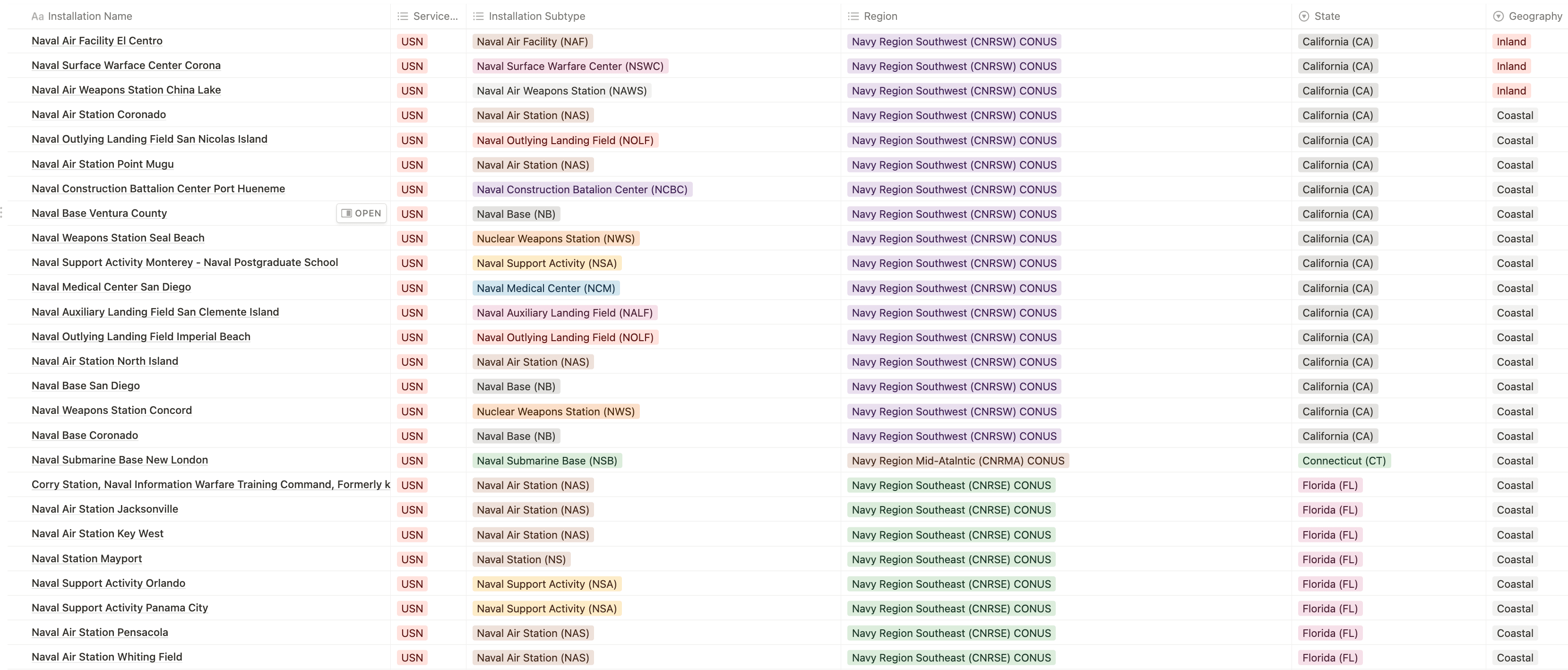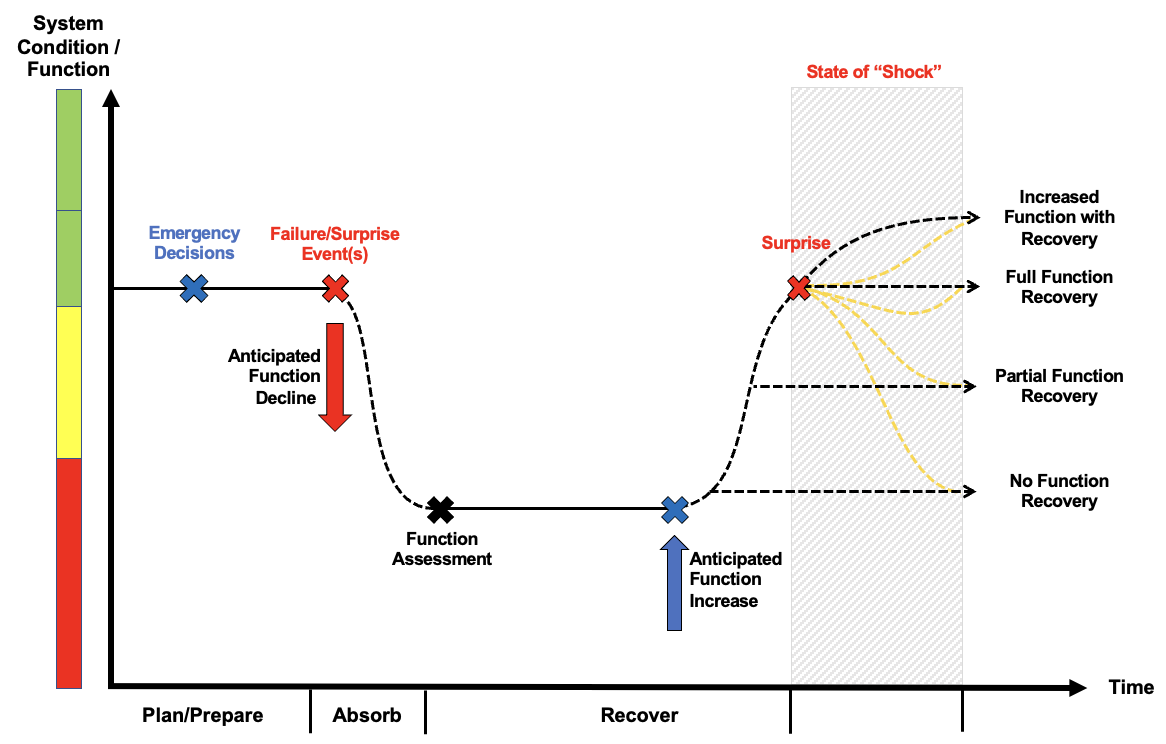Installation Vulnerability - Center for Infrastructure Defense
Installation Vulnerability
Climate change events are impacting critical infrastructure in both foreseen and unpredictable ways. The unpredictability of climate change events and the lack of the DoD’s adequate emergency responses and resourcing during these events is creating the perfect condition to experience climate surprises that defy historic expectations and beliefs. Recovering from these climate change events happens in stages, where a storm might last a few days, re-stabilizing and reestablishing basic necessities might last a few weeks to a few months, while rebuilding the installation might take a decade. The DoD widely understands climate change as a long-term problem that requires advanced planning and resources. However, the DoD falls short with planning and resourcing for the near-term climate driven hazards.
Database
As part of this project, we have focused on compiling anecdotal evidence from several significant DoD climate events. Our initial database contains 344 entries and demonstrates an analysis of operational issues and natural disasters that have impacted major military installations and missions. A review and framework for how surprises occurred, the military response, and any misalignment between expectations about operational boundaries and environmental systems has been developed. The database also lists characteristics that influence the nature and depth of system expectations by mapping a three-tier shock scale that influence surprise (normal, situational, fundamental).

DoD Top 10 Technical Report
This data will be used to build on the literature surrounding vulnerability and resilience assessment of mission essential infrastructure systems. Furthermore, the data has informed a technical report focused on the Top 10 DoD mission assurance installations by exploring a dozen case studies of the installations shown in Table 1.
|
Installation |
Event |
|---|---|
|
Tyndall Air Force Base |
Hurricane Michael 2018 |
|
Offutt Air Force Base |
Missouri River Flooding 2019 |
|
US Army Fort Hood |
Winter Storm Uri 2012 |
|
Naval Air Station Sigonella |
Flooding 2021 |
|
Naval Air Station Key West |
Hurricane Ian 2022 |
|
Keesler Air Force Base |
Hurricane Katrina 2005 |
|
US Army Fort Bragg |
Hurricane Florence 2018 |
|
Naval Base Ventura County |
Hill Fire and Woolsey Fire 2018 |
|
Naval Air Station Norfolk |
Thunderstorm Cell 2022 |
|
Marine Corps Base Camp Lejeune |
Hurricane Florence 2018 |
|
US Army Garrison Fort Wainwright |
Stuart Fire 2013 |
|
USS Harry Truman |
Extreme weather 2022 |
Table 1. Case Studies of DoD Installations and Related Major Climate-Driven Events
This technical report is currently undergoing revisions and is anticipated to be submitted in May 2023. Future work that is projected to build on this preliminary report includes: (1) political science/security studies paper focusing on mission assurance, the DoD, and climate security; (2) a risk analysis paper that situates the Top 10 DoD installations and their associated climate driven surprises in to the surprise categories; and (3) a pattern-based inquiry paper using three or more of the case studies to identify the specific patterns based on local stories of adaptative and maladaptive responses to the climate-driven hazard event.
Marine Corps Base Camp Lejeune Article
A further deep dive titled “Resilience to Climate Surprise: Lessons from Hurricane Florence and Marine Corps Base Camp Lejeune,” is pending resubmission with revisions to Sustainable and Resilient Infrastructure (SRI). This work presents an in-depth case study on the destructive 2018 storm Hurricane Florence to determine what emergency response and operational decisions reduced or exacerbated disaster impacts at Marine Corps Base Camp Lejeune (MCBCL). We utilize resilience literature and methods to develop a timeline of events triggered by Florence and connect them to the beliefs and decisions made by emergency response and installation staff to protect and rebuild failed systems. We analyze this timeline with a framework based on military surprise attacks to determine if emergency response at MCBCL was resourced to handle the storm or if it was surprised and unable to control disaster impacts. We find operational, infrastructure, and readiness decisions at the installation were surprised because they were based on the beliefs and expectations of past storms. Thus, the impacts associated with Hurricane Florence were not extreme due to the direct damage of the storm, but also due to a lack of adaptive capacity to produce innovative solutions to surprises.


